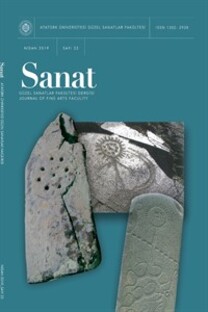Picasso, Kübizm ve Yansıtıcılık
Picasso, Cubism, and Reflexivty
The interpretation of Cubism has a great bearing on the understanding of Modernism. Cubism was the cornerstone of twentieth-century art because it broke past tradition. It established 'modernist' flatness, opti-cality and involvement with the medium of art. According to formalist and linguistic approaches, Cubism is an art about art and it is one of the earliest instances. These approaches may be classified, broadly, as Kantian. Another set of aproaches considers Cubism to be concerned with external world. The problem with the Kantian approach until now is that it has not been sufficiently historical or critical. Kantian estetik autonomy be provided with more powerful criticals and historical focus. The special achievement of Cubism, and above all of Picasso, was to reinvent classical, mediated representation, and in that reinvention also to transform it so as to reveal central conventions and mental processes. This achievement of Cubists was that of the classical minds becoming aware of its means for thinking and representing the world. This is an event that may be called reflexive. This theorical framework came from the evidence of Cubist works of art and their relation to the classical tradition. So it is necessary to examine certain crucial issues, namely, iconography, draftmanship, perspective and space time, illusionism,and semiotics of representation within the western art.
___
Alan Solomon, "Pablo Picasso: Symbolism in the Synthetic Cubist Still Life. A Study of his Iconography from 1911-1927" (Ph.D.diss., Harward, 1961)Anthony Blunt, Arthistlc Theory In Italy, 1450-1600, London, 1940
Christopher Green, Cubism and its Enemies, New Haven, 1987
Hilary Lawson, Reflexivity, London, 1985
Jacques Riviere, "Sur les tendances actuelles de la peinture", Revue d'Europe et d'Amerique (March 1, 1912), pp. 383-406
Jürgen Habermas, Der phllosophlsch Dlscurs der Modeme, Frankfurt, 1985
Kenneth E. Silver, "Esprit de Corps: The Great War and Franch Art, 1914-1925" (Ph.D.diss., Yale, 1981)
Maurice G. Poirier, Studies on the Concepts of Disegno, invenzione, and Colore in Sixteenth and Seventeenth Century Art Theory" (Ph.D. diss., New York University, 1976)
Michael Phillipson, Painting, Language and Modernity, London, 1985, s.22-47
Paul Guyer, Kant and the Claims of Taste, Cambridge, Mass., 1974
Par Bergmann, Modemolatria et Slmultenelta, Uppsala, 1962
Richard Bernstein, Habermas and Modernity, ed., Cambridge, Mass., 1985
Richard Rorty, Philosophy and The Minor of Nature, Princeton, 1979
Richard Rorty "Epistemoiogical Behaviorism and the De-Transcendentalization of Analytic Philosophy", In Hermeneotics and praxis. ed, Robert Hollinger, Notre Dame, ind., 1985, s.89, s. 104-109
Yve-Alain Bois, "Kahnweiler's Lesson", Representations,18(Spring 1987),s.33-68
William. S. Rubin, "From Narrative to 'iconic' in Picasso: The Burried Allegory in Bread and Fruitdish on a table and the Role of Les Demoiselles d'Avignon, Art Bulletin 65:4 (December 1983), pp.27-34
- ISSN: 1302-2938
- Yayın Aralığı: Yılda 2 Sayı
- Başlangıç: 1999
- Yayıncı: Cordus
